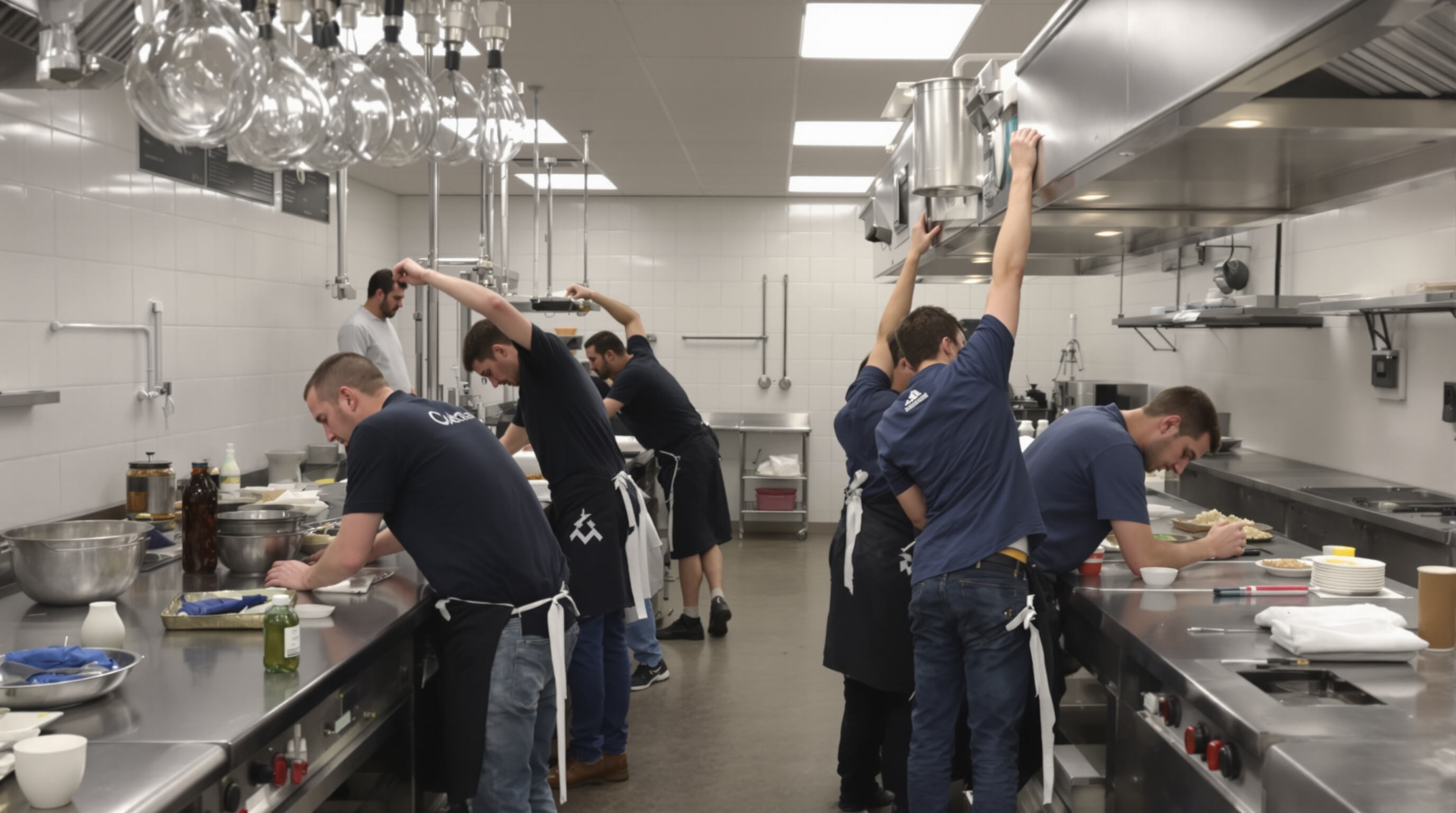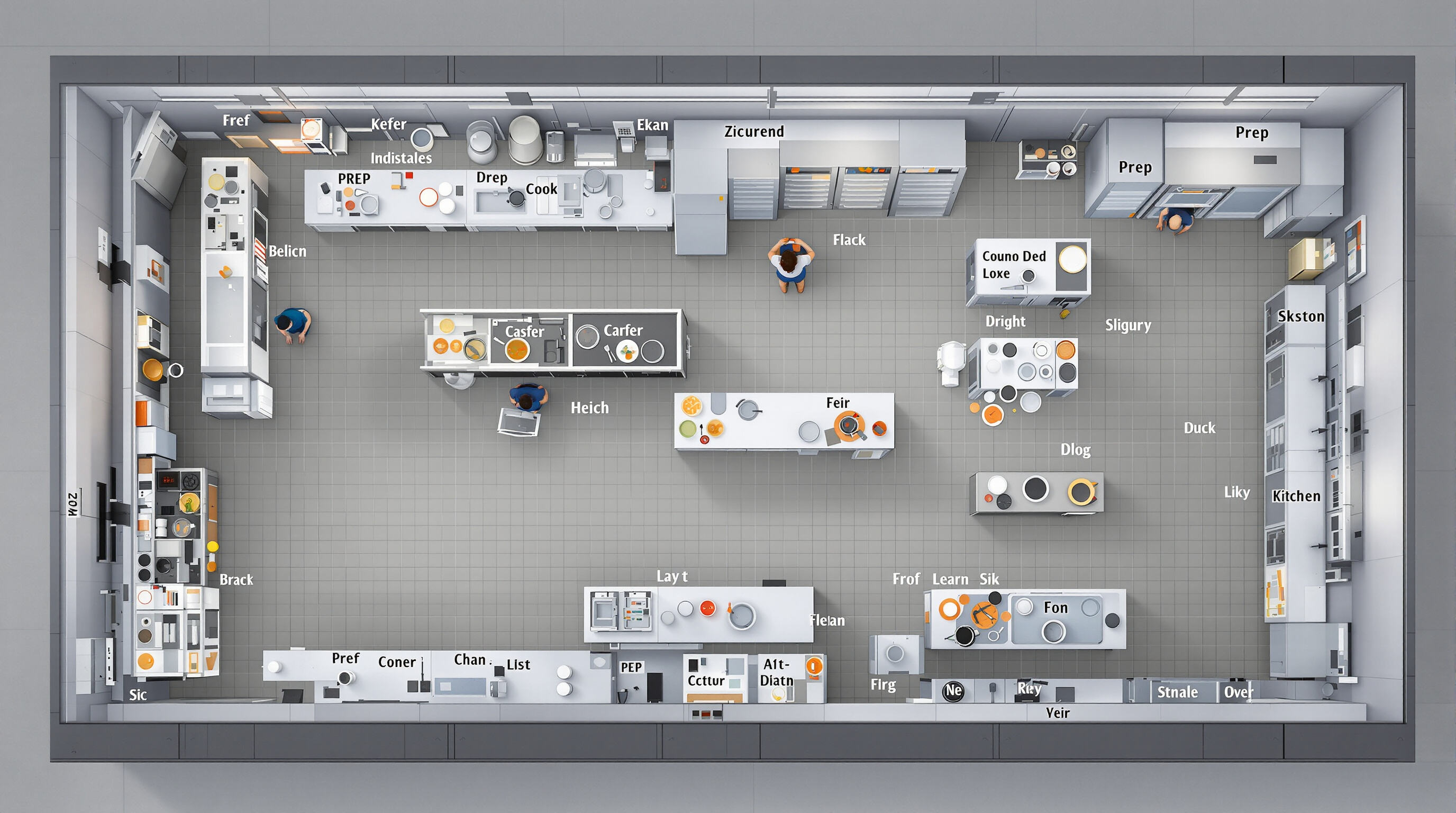News
Ergonomic Kitchen Furniture Heights That Lower Staff Fatigue and Waste
How Kitchen Furniture Heights Impact Staff Fatigue and Injury Risk

The physical strain caused by improperly sized kitchen furniture
The size of kitchen furniture really matters when it comes to keeping muscles and bones healthy. When counters aren't properly sized for staff, they end up twisting and bending in ways that just don't feel right while doing their daily prep work. According to research published last year on ergonomics in kitchens, nearly four out of five chefs who worked at counters set at fixed heights started experiencing back problems after about two years on the job. Most of these folks had gotten used to leaning forward because their work surfaces were anywhere from two to four inches below what made sense for their body mechanics. And let's not forget about those cutting stations either. If the surface is higher than where someone's elbows naturally rest, studies show this can lead to about 40 percent more stress on the shoulders during all that chopping and dicing. That's why many professional kitchens now take extra care to measure and adjust their equipment according to actual worker needs rather than sticking with standard sizes off the shelf.
Cumulative fatigue in commercial kitchens due to non-ergonomic workstation heights
Fixed height workstations really pile on the tiredness as time goes on. Line cooks tell us about this all the time actually - around 6 out of 10 report slower movements and less accuracy after just four hours working at stations that aren't set right for their body dimensions. Anti-fatigue mats help a bit but not much. They cut down leg pain by maybe a quarter, though that's still not great if the counter isn't matching where someone's hips meet their elbows. We've seen some serious problems in busy kitchens where staff turn over fast. When workers get too worn out, mistakes happen more often. According to the Hospitality Safety Institute from last year, this leads to roughly 18 percent more wasted ingredients right when restaurants need them most during rush hour service.
Injury statistics linked to poor kitchen furniture ergonomics
Workstation design flaws account for 34% of all kitchen injuries. Key data points include:
- $740k annual costs per mid-sized restaurant from ergonomic injuries (OSHA, 2023)
- 3.1x higher risk of carpal tunnel syndrome among pastry chefs using fixed-height marble counters
- 28% of dishwashers’ chronic knee pain linked to sinks positioned at improper heights
Standardized vs. personalized kitchen furniture heights: Balancing practicality and comfort
While standardized 36-inch counters simplify procurement, leading ergonomic guidelines now recommend a 34–38 inch range with adjustable zones tailored to specific tasks:
- High-precision tasks (e.g., garnishing) benefit from 38-inch surfaces
- High-force activities like dough kneading are better supported at 34 inches
- Hybrid roles can leverage motorized islands that shift between prep and cooking configurations
One Michelin-starred bistro reduced staff turnover by 41% after introducing personalized height presets, demonstrating the long-term value of adaptable furniture in workforce retention.
Core Ergonomic Principles for Reducing Waste and Strain in Kitchen Design

Key ergonomic guidelines for efficient and safe kitchen furniture layout
A well-designed kitchen layout reduces daily physical strain by 18–34%, according to occupational health research (Cornell University, 2023). Three core principles guide effective design:
- Work triangle optimization: Position sink, cooking surface, and refrigeration within 3.9–7.9 meters of each other
- Task-specific zoning: Separate prep and cooking areas to minimize cross-contamination and unnecessary movement
- Height customization: Match countertop height to the user’s elbow level ±5cm when standing naturally
Designing user-centric workspaces to minimize physical strain
Adjustable furniture is essential in commercial kitchens, where 74% of staff report chronic back pain (National Restaurant Association, 2023). Effective solutions include:
- Pull-out shelving at 65–75cm for heavy mixing bowls to reduce lifting strain
- Angled counter extensions (10–15°) to support neutral wrist positions during knife work
- Multi-level surfaces that accommodate users ranging from 155cm to 195cm in height
How proper ergonomics reduces movement waste and boosts workflow efficiency
Optimized kitchen layouts cut unnecessary movements by up to 30%, significantly improving workflow:
| Movement Type | Traditional Layout | Ergonomic Layout |
|---|---|---|
| Reaching | 42’/hour | 9’/hour |
| Bending | 28’/hour | 3’/hour |
| Twisting | 35’/hour | 7’/hour |
This reduction translates directly into operational gains—kitchens with ergonomic designs report 19% fewer ingredient spills and 27% faster cleanup cycles.
Aligning equipment placement with natural body motion patterns
Kitchens applying motion analysis reduce repetitive stress injuries by 41% through strategic equipment placement:
- Mixers positioned at hip height (85–95cm) prevent shoulder elevation
- Fryer baskets angled 20° forward support neutral wrist alignment
- Refrigerated drawers eliminate deep bending associated with vertical units
Adjustable and Modular Kitchen Furniture for Multi-User Adaptability
Advantages of Height-Adjustable Counters and Islands in High-Traffic Kitchens
Modern kitchens benefit from adaptable workstations that accommodate diverse staff and tasks. Research from the 2023 Culinary Ergonomics Report shows adjustable workstations reduce upper-body strain by 42% compared to fixed surfaces. In 154 commercial kitchen trials, operators noted 31% fewer product spills when counters aligned with workers’ elbow heights.
Case Study: Adjustable Workstations in a Michelin-Starred Commercial Kitchen
A 14-seat fine dining restaurant installed hydraulic prep tables with a 4-inch adjustment range. Over 18 months, staff injuries dropped by 58%, and vegetable trimming waste decreased by 23%. These results reflect broader industry trends showing that customized workstations improve both safety and ingredient yield.
Growing Trend of Motorized, Height-Adjustable Kitchen Furniture Solutions
Electric lift systems now enable height adjustments at 0.9 seconds per inch—19% faster than manual mechanisms. In 2024, 68% of new commercial kitchen installations included preset memory positions, allowing seamless transitions between tasks such as bulk chopping (ideal at 34 inches) and delicate plating (recommended at 42 inches).
Modular Kitchen Furniture Strategies for Diverse Staff Height and Task Needs
Modular systems enhance flexibility and efficiency through:
- Mobile islands with interchangeable surfaces (e.g., butcher block to chilled marble)
- Component-based shelving that adapts to changing ingredient staging demands
- Retractable counters for temporary workspace expansion
A 2023 survey of 82 chefs found that kitchens using modular designs required 37% fewer staff adjustments during shift changes compared to fixed layouts.
 After-Sales:
After-Sales:
 EN
EN
 AR
AR
 HR
HR
 NL
NL
 FI
FI
 FR
FR
 DE
DE
 EL
EL
 HI
HI
 IT
IT
 PT
PT
 RO
RO
 RU
RU
 ES
ES
 TL
TL
 ID
ID
 SL
SL
 VI
VI
 ET
ET
 MT
MT
 TH
TH
 FA
FA
 AF
AF
 MS
MS
 IS
IS
 MK
MK
 HY
HY
 AZ
AZ
 KA
KA
 UR
UR
 BN
BN
 BS
BS
 KM
KM
 LO
LO
 LA
LA
 MN
MN
 NE
NE
 MY
MY
 UZ
UZ
 KU
KU









